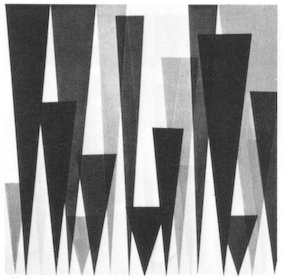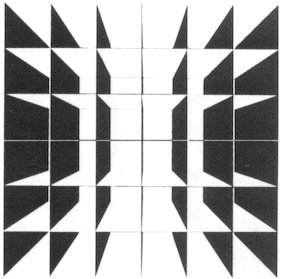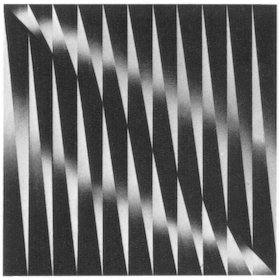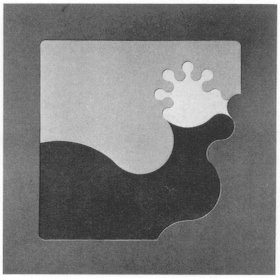|
(3) Expression of rhythm using resembling shapes The shapes used in Figures 490 and 491 are not geometrically similar shapes. However, roughly speaking, they are close to similar shapes. It is easy to create rhythm using these groups of shapes. Figure 490 utilizes a static method to configure the direction of shapes so they are aligned vertically. However, since it has an image of moving waves, and a freedom is felt on the size and arrangement, a rhythm with a dynamic element and a freedom is expressed. In Figures 494 and 491, dynamic rhythms are composed using visible wave forms and vivid oblique lines. Different from the above examples, a configuration
with a rhythm is made by assembling shapes which have definitely different
shapes as shown in Figure 492. Here, the KOHSEI (Basic Art &
Design)al elements having notable differences in shapes are combined tightly
into a structure, which results in limitations each other. Therefore, it
is concluded that these resembling shapes form a constructive rhythm.
|



